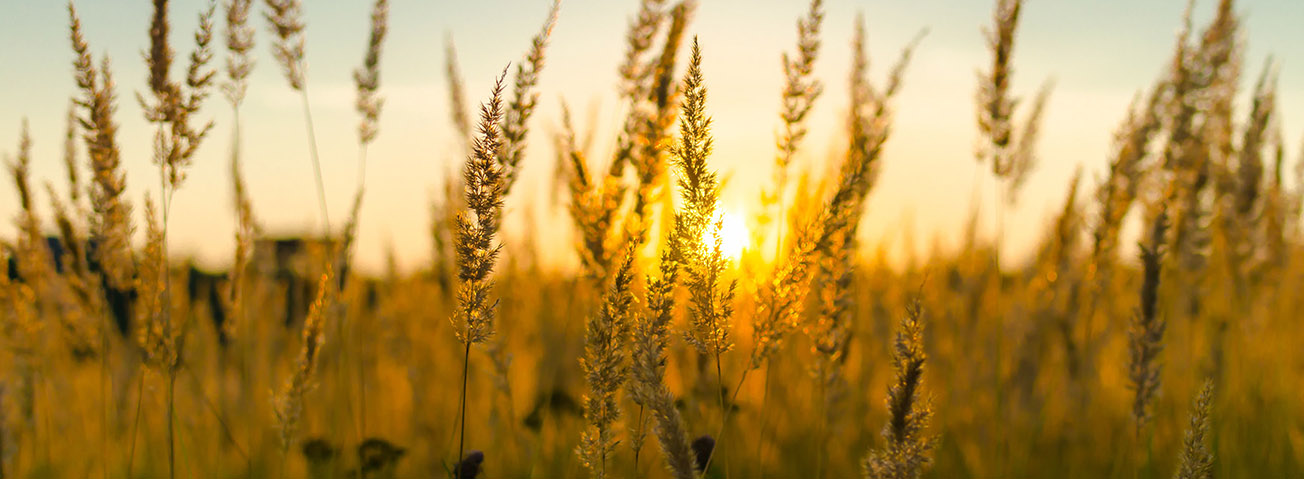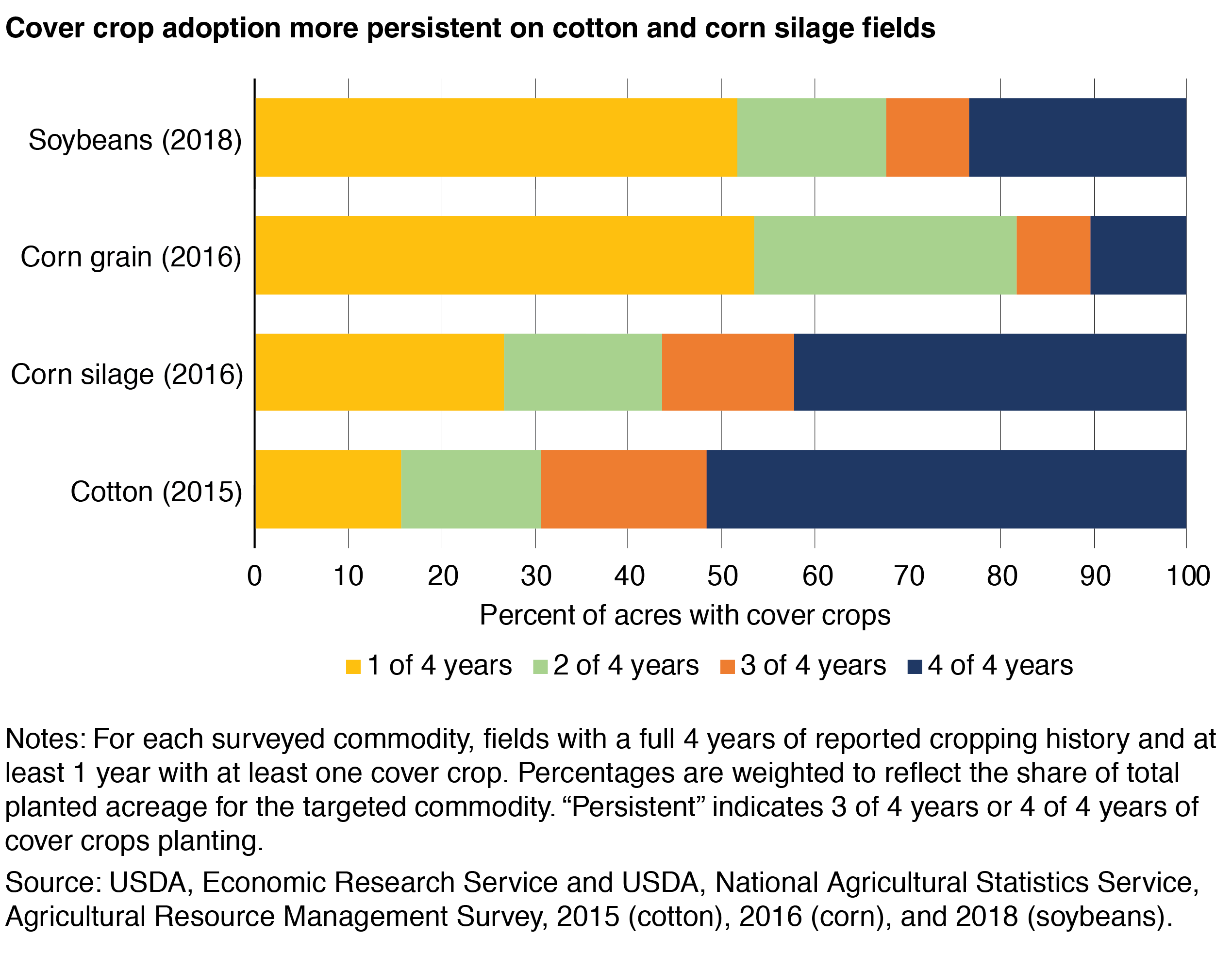
Persistent Cover Crop Adoption Varies by Primary Commodity Crop
- by Steven Wallander
- 3/1/2021
The use of cover crops on U.S. cropland increased by 50 percent between 2012 and 2017. During this period, Federal and State conservation programs increased efforts to promote cover crops through financial and technical assistance. Cover crops—such as unharvested cereal rye, oats, winter wheat, or clover—are typically added to a crop rotation during the period in between two commodity or forage crops. Cover crops provide a living, seasonal coverage of soil that can result in a variety of on-farm benefits such as increased soil moisture capacity. Cover crops can also provide public environmental benefits such as less runoff of sediments and nutrients into waterways, reduced flooding in watersheds, and greater soil carbon sequestration.
A new report from USDA, Economic Research Service (ERS) examines cover crop management by using data from the Agricultural Resource Management Survey (ARMS), a national survey of farming operations and production practices jointly conducted by ERS and USDA, National Agricultural Statistics Service. The field-level data are based on ARMS’ Production Practice and Cost Report, which is conducted periodically for corn (2010 and 2016), cotton (2015), wheat (2017), and soybeans (2018).
Persistent year-after-year adoption of cover crops can lead to greater on-field and off-field benefits through increased accumulation of soil organic matter. For this study, we defined persistent adoption as 3 or 4 years of adoption within a 4-year crop rotation. Based on this measure, the extent of persistent cover crop use varies considerably by the primary commodity crop planted on the field. Among those fields that adopted a cover crop in at least 1 year of the rotation, persistent cover cropping occurred on 69 percent of cotton acres (2015), 56 percent of corn-for-silage acres (2016), 19 percent of corn-for-grain acres (2016), and 32 percent of soybean acres (2018).
These adoption rates are heavily impacted by new adopters. Nationally, cover crop acreage has increased over time as conservation programs have promoted cover crop adoption through research, technical assistance, and financial assistance. Many of the fields with only 1 or 2 years of cover crops are planting those in the third or fourth year surveyed, suggesting that they may be new adopters. In addition, between corn and soybeans, the more persistent adoption among soybean acreage may have more to do with the later timing of the soybean survey (2018) relative to the corn survey (2016).
This article is drawn from:
- Wallander, S., Smith, D., Bowman, M. & Claassen, R. (2021). Cover Crop Trends, Programs, and Practices in the United States. U.S. Department of Agriculture, Economic Research Service. EIB-222.
You may also like:
- Bowman, M., Wallander, S. & Lynch, L. (2016, September 6). An Economic Perspective on Soil Health. Amber Waves, U.S. Department of Agriculture, Economic Research Service.
- Environmental Quality. (n.d.). U.S. Department of Agriculture, Economic Research Service.
- Wallander, S. & Maguire, K.B. (2020, April 6). Partially Completed Conservation Contracts Reveal On-Farm Practice Incentives . Amber Waves, U.S. Department of Agriculture, Economic Research Service.
- Hellerstein, D., Vilorio, D., Ribaudo, M., Aillery, M., Bigelow, D., Bowman, M., Burns, C., Claassen, R., Crane-Droesch, A., Fooks, J., Greene, C., Hansen, L., Heisey, P., Hitaj, C., Hoppe, R.A., Key, N., Lynch, L., Malcolm, S., McBride, W.D., Mosheim, R., Nehring, R., Schaible, G., Schimmelpfennig, D., Smith, D., Sneeringer, S., Wade, T., Wallander, S., Wang, S.L. & Wechsler, S.J. (2019). Agricultural Resources and Environmental Indicators, 2019. U.S. Department of Agriculture, Economic Research Service. EIB-208.


